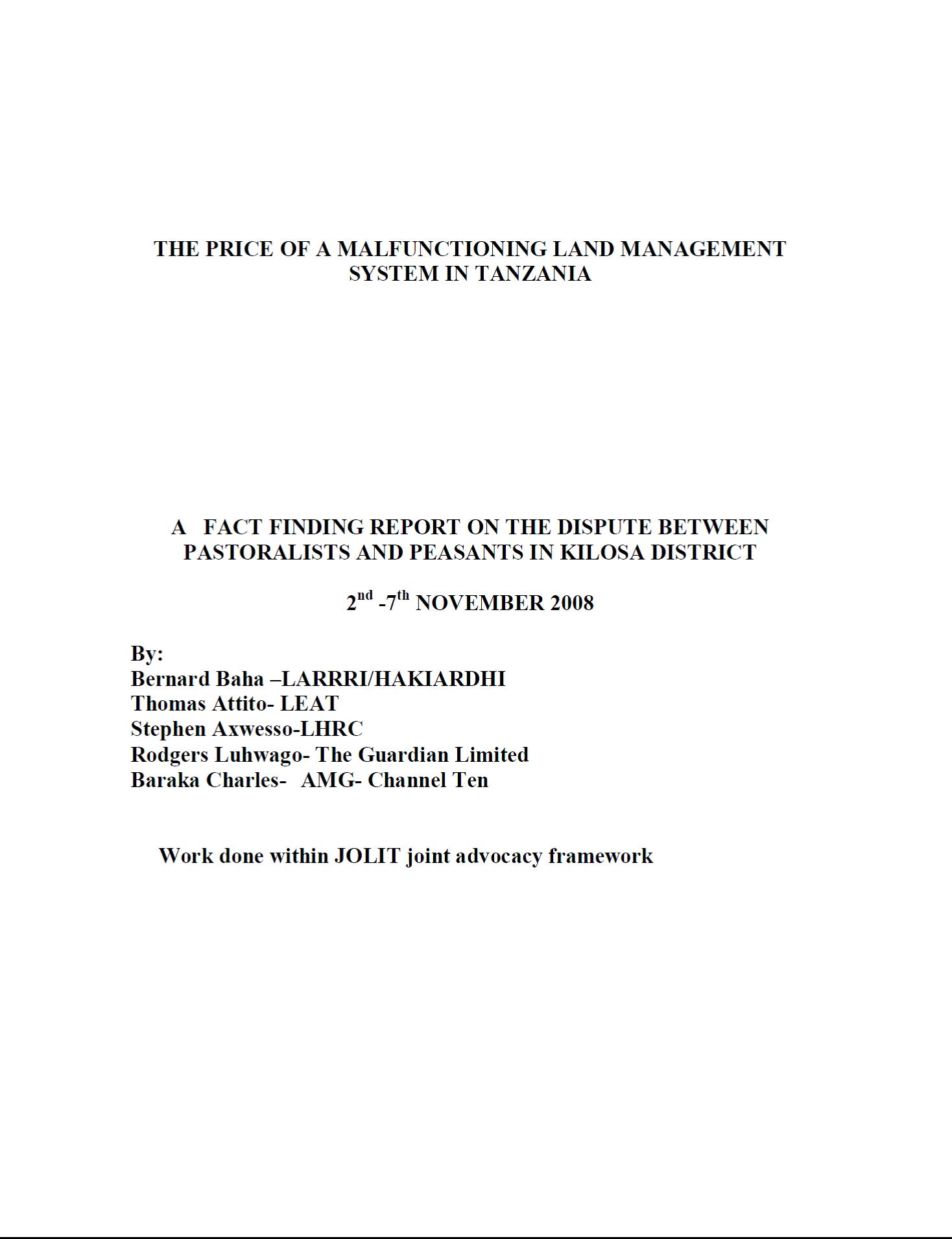Resource information
It is almost a decade now since the fights between Pastoralists and peasants broke out in Kilosa district Morogoro region in December 2000 claiming tens of people’s lives and causing irreparable losses and damages their properties. While the wounds of that dark record are still fresh in some of the minds of the communities in Kilosa, another very serious fight between the same or rather similar groups occurred this October prompting the media and human rights activists to find some ways to intervene in a bid to find lasting solutions for the problems. According to media reports on 27th October 2008, the fights erupted in Mabwegere village of Msowero ward involving Mambegwa sub village that is inhabited by pastoralists versus farmers of Kikenge village. The media further reported that six people were killed and properties like houses burnt to ashes, dozens of cattle stolen, hence creating internally displaced people within the area. A total of 832 peasants took refuge in neighbouring villages for fear of being slaughtered by pastoralists on revenge.
Following those events and reports, LARRRI, LHRC, LEAT and PINGOS Forum formed a fact finding team to establish the root causes to the conflict and the nature, factors and forces behind the endless disputes in Kilosa district as a whole but more specifically in the respective villages. The fact finding team was comprised of programme staff from those organizations who were also joined by two Journalists from the Guardian Ltd and African Media Group-Channel ten. The team was tasked to among other things; establish the cause and magnitude of the current conflict, gather information and make a critical analysis of all the issues surrounding this serious land conflict; Interview representatives of both parties to the conflict, village, ward, district and regional leaders to get their opinion about the issues.
As the next sessions will detail the matter, the fact finding team was able to establish that land and other land based resources are all at the centre stage of the conflicts. It is just a matter of what factor or force manifests itself more strongly than others but the central question remains that inequitable access to and distribution of land and related resources keeps on triggering fights between the two groups which are all the time in a tension ofsome kind about their rights to land. The team thus gathered information, attempts to analyse the underlying causes of the problem and goes a step ahead to recommend some of the possible solutions and actions for different actors.


